St. Louis furniture maker David Moore wowed us a couple years ago with his filmmaking and woodworking prowess when we discovered one of his videos… one that was playfully called David Moore makes a table in 1 minute.
So, in looking for something different to put in this week’s eLetter, I reached into the YouTube archives again and pulled out another great David Moore video to highlight.
This one gives you an overview of how to flatten wide boards with handplanes. Yikes, what a workout!
The best part of his videos is the way he captures the beauty of the craft. They’re not simply nitty-gritty “how-to” videos, but they inspire you to get out into the shop and put your planes to use.
For handplane novices like myself, they’re also a good refresher on the differences between different types planes (scrub, jack, jointer, smoother…).
How to flatten wide boards
For power-tool only folks, flattening wide boards might require the use of large industrial machinery or special jigs, but Moore argues that you can do the same work, in a small space, with just a few hand tools for potentially less money.
He starts out by using a scrub plane (an agressive tool) to remove twist. Then he moves to the jack plane (number five) to reduce tearout and remove the deep gouges left by the scrub plane. A jointer plane (number seven) skims the surface and removes subtle high spots then passes with a smoother (number four) removes the tearout and other plane marks.
Then, he manually squares up the edges and determines the thickness of the boards. Repeated passes with the scrub plane eventually bring the board to final rough dimension, then the process is repeated again with the jack, jointer, and smoothing plane.
Phew… looks like a lot of work… but if you’ve got some hand planes, maybe you can skip the gym membership and just make shavings in your basement instead…
What about you folks? There are many ways to flatten wide boards and even special jigs that can help you joint using narrow jointers or even with a planer.
Do you use these methods? Anyone prefer to flatten by hand? Any special advice for people who might be considering it (e.g. get the ice packs ready)?
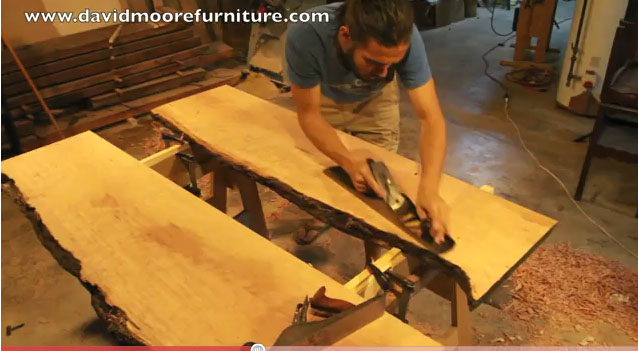
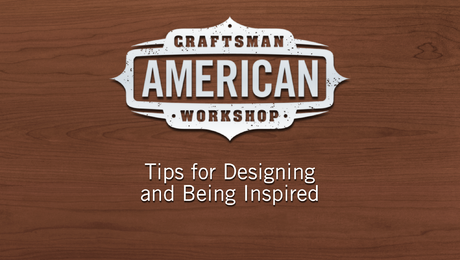
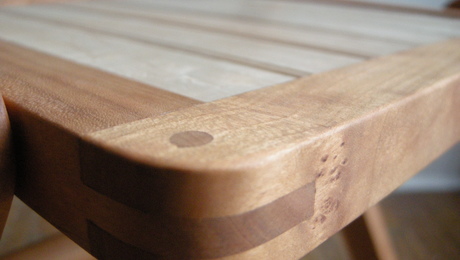
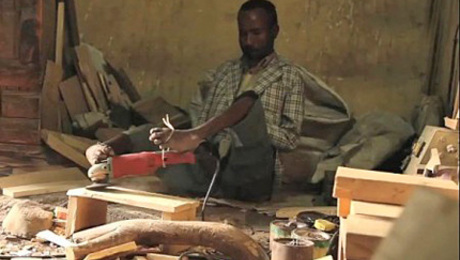






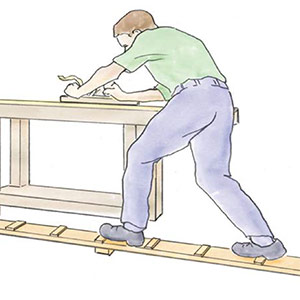












Comments
Thoroughly enjoyed this video -- thank you for reinforcing benefits and principles of using hand tools effectively.
Excellent tutorial, thanks for finding and sharing. Have just been bought some "really" old hand planes, which work quite well after a tickle on the blades, just need to figure out if I have these types! Don't have anything with a curved blade, not sure what make numbers 4 and 5 specific either... Will try my best, as always.
It is a beautyful approach to thicknessing but I will never use a shoulder plane in the plce of a scrub plane
That shoulder plane looks kinda new so I'd have no qualms about using it for this purpose. However, I have an antique Stanley #40 scrub plane that works very well too. In this video, Dave makes all of his passes with the plane in parallel leaving long ridges. I like to make a cross hatch pattern with my passes leaving little diamond shaped high points. This makes the work of the next plane much easier.
@Mailman14:
You don't absolutely need the scrub plane; it just makes the job easier, because the work goes faster. Some years ago, I flattened a seriously warped mahogany board about 16" wide and five feet long, using a single #5 plane for everything.
Of course, I was a lot younger then... ;-)
-Steve
So nice to have someone explain this process. I flatten some pretty large stuff by hand regularly and can say that David has approached this well. The shoulder plane choice is unusual but makes sense for very heavy work since it decreases the likelihood of a clogged throat.
If you want to skip the scrub plane you can always skew the blade of a jack or a smoother, it accomplishes about the same thing it just takes a bit more tinkering to get the cut right.
Great Gina!
Keep bringing us more like this. Another reason finewoodworking.com is tops in my view..:>)
And almost forgot - your extra effort to give us additional references. Thanks again!
FWIW - almost any old beater #3/#4 can be a scrub plane with a highly cambered blade.
Save those $$ for the final smoother - my favorite - the LV '164 1/2' bevel up - about $220 and well worth it!
That's way beyond my physical and mental capacity
Very nice video. The editing is very good and professional.
Keep those "hand work" videos coming.
Thanks cahudson42.
And for all you folks, if you happen upon any great woodworking YouTube videos, be sure to let us know (fw-web AT taunton.com).
Thanks, Gina
Log in or create an account to post a comment.
Sign up Log in